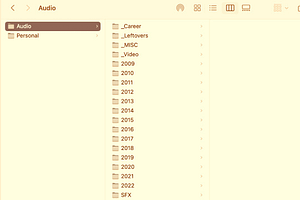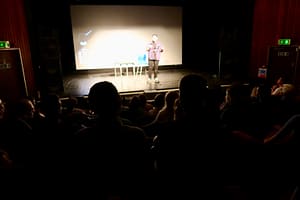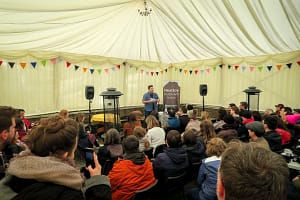
Quick guide to audio file management and naming conventions
I once asked a group of about eight audio makers about file management and the conversation almost ended in a
My Year 10 science teacher, Mr. McFarlane would have a lasting impact on how I think about editing audio.
During experiments, he would shout, “more is not better, more is more cleaning up”
And the same is true for storytelling.
Communicating the same with less, in the cleanest, most efficient way possible is our eternal challenge.
It was the French philosopher, Blaise Pascal who apologised, “I would have written a shorter letter, but I did not have the time”.
Roman Mars once argued for producers to be more mindful of listeners’ time while editing. If you can trim a minute of flab out of your program, and 10000 people hear the episode, you just saved them 166 hours collectively.
It reminds me of another French writer, Antoine de Saint-Exupéry, who said, “Perfection is achieved, not when there is nothing more to add, but when there is nothing left to take away.”
It’s a catchy line, but how can this help our approach to sustaining duration?
If you go to Uluru, you might hear the expression that the rock is not a rock; it’s an ‘upside down hole’.
What they mean is that a long time ago the rock was hidden under ground level. Over time the world around the rock slowly eroded, but the rock – a powerful iceberg of rich sediment – refused to go down with it. It grew bigger and bigger and eventually became the wonder we see today.
Like Uluru, we carve our audio back and, at some magic point in the process, the story emerges.
My grandfather, a carpenter, used to say, “measure twice, cut once”. This was important when you were making furniture out of scrap wood in your back shed.
But audio documentary makers are not carpenters; we are sculptors.
And what’s more, our cuts are ‘non-destructive’.
There is nothing precise about storytelling. Nothing is compulsory. Everything is possible.
All good storytelling is iterative.
It’s a refinement that requires time, space, and perspective.
I’ve never once hit a story ‘hole in one’.
Besides, golfers don’t practice hitting a hole in one; they practice their swing.
‘Saving as’ you go is good practice for file management and mitigating technical risk. But it also empowers the producer, subconscious or not, that they can cut with confidence knowing if it doesn’t work they can come back.
But they rarely do.
Both traditional and digital media can be distracted by duration – how many words, the length of the broadcast slot, or the most strategic video duration for the algorithm of the day. And that’s before advertisers are considered.
The question to ask is; how are you approaching the process?
Bringing something down to meet an arbitrary duration, or working a remarkable story up to be the best it can be?
Nobody travels to Uluru to see how much the world eroded. They go to witness the awe-inspiring natural wonder that rose up.
When it comes to figuring out how to sustain duration, prioritise crafting the rock. The rock is the hard part.
It’s easier to trim fat than it is to build bone.
In other words, focus on the story and the duration will sort itself.
“How long is a piece of string?” is the wrong question, rhetorical or otherwise.
A better question is, “how can I make remarkable string?”

I once asked a group of about eight audio makers about file management and the conversation almost ended in a

The alleyway is stereotypically dark and long. It’s after 1am, I have no idea where I am and my phone’s about to die.

Here’s what to expect from the ‘Who gives a fork?’ live show touring Aug/Sept 2022.

Jill Beytin, co-founder of Bear Radio, describes where the local scene is at including a juicy story about a recent controversy with one of Germany’s public broadcasters.
get the latest news about upcoming projects:
© 2021 mike williams